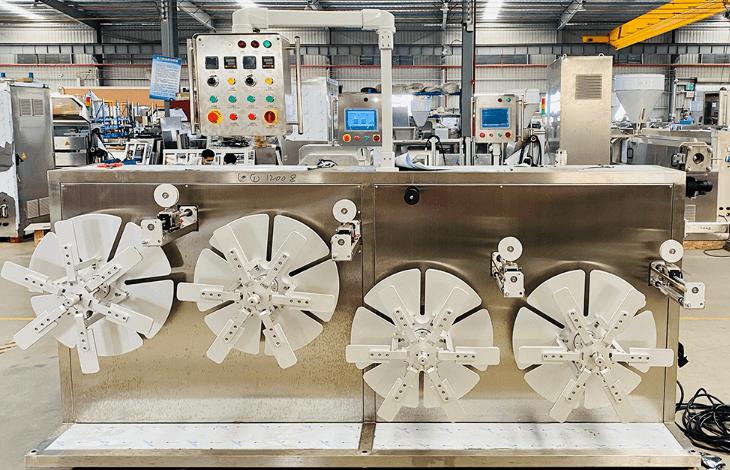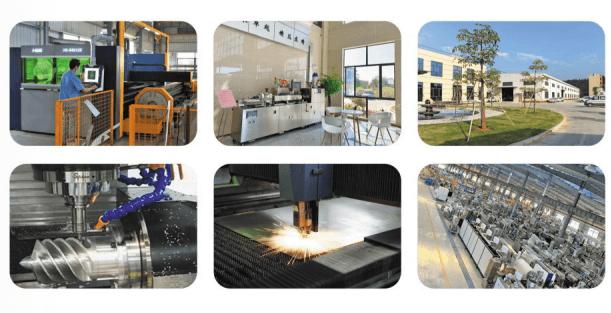
A Comprehensive Guide to ABS Pipe Extruders
ABS pipe extruders play a crucial role in the manufacturing of medical equipment, providing the industry with durable and reliable ABS pipes.
In this comprehensive guide, we will explore the ABS pipe extrusion process, the properties and applications of ABS pipes, the various types of ABS pipe extruders, key considerations for their operation, safety measures and compliance, and troubleshooting techniques in ABS pipe extrusion technology.
In this comprehensive guide, we will explore the ABS pipe extrusion process, the properties and applications of ABS pipes, the various types of ABS pipe extruders, key considerations for their operation, safety measures and compliance, and troubleshooting techniques in ABS pipe extrusion technology.
What are ABS Pipes?
ABS, short for Acrylonitrile Butadiene Styrene, is a thermoplastic polymer known for its excellent mechanical properties, chemical resistance, and durability.
ABS pipes find widespread use in the medical equipment industry due to their ability to withstand high temperatures, resist impact and pressure, and offer good dimensional stability. They are commonly employed in applications such as fluid transport, drainage systems, and medical device components. ABS pipes also possess a smooth surface finish, making them ideal for applications requiring hygienic conditions.
ABS pipes find widespread use in the medical equipment industry due to their ability to withstand high temperatures, resist impact and pressure, and offer good dimensional stability. They are commonly employed in applications such as fluid transport, drainage systems, and medical device components. ABS pipes also possess a smooth surface finish, making them ideal for applications requiring hygienic conditions.
What is ABS Pipe Extrusion Process?
The ABS pipe extrusion process involves the transformation of ABS resin into pipes of desired dimensions and properties. The process typically utilizes extruders, which are machines designed to melt, mix, and shape the raw material. There are two main types of ABS pipe extruders: single screw extruders and twin screw extruders.
Single screw extruders are widely used in ABS pipe extrusion due to their simplicity and cost-effectiveness. They consist of a rotating screw housed within a heated barrel. As the ABS resin is fed into the extruder, the screw conveys the material forward, melting it and creating pressure to force it through a die, resulting in the desired pipe shape.
Twin screw extruders offer enhanced mixing capabilities and are suitable for more complex ABS pipe extrusion processes. They consist of two intermeshing screws that efficiently melt and mix the ABS resin, leading to improved homogeneity and better control over pipe properties.
During the extrusion process, several parameters need careful control, including temperature, screw speed, and cooling methods. Maintaining optimal temperature profiles throughout the extruder and ensuring precise screw speed control are crucial for achieving consistent melt quality and dimensional accuracy. Cooling and sizing methods are employed after the extrusion process to solidify the molten ABS material and achieve the desired pipe dimensions.
Single screw extruders are widely used in ABS pipe extrusion due to their simplicity and cost-effectiveness. They consist of a rotating screw housed within a heated barrel. As the ABS resin is fed into the extruder, the screw conveys the material forward, melting it and creating pressure to force it through a die, resulting in the desired pipe shape.
Twin screw extruders offer enhanced mixing capabilities and are suitable for more complex ABS pipe extrusion processes. They consist of two intermeshing screws that efficiently melt and mix the ABS resin, leading to improved homogeneity and better control over pipe properties.
During the extrusion process, several parameters need careful control, including temperature, screw speed, and cooling methods. Maintaining optimal temperature profiles throughout the extruder and ensuring precise screw speed control are crucial for achieving consistent melt quality and dimensional accuracy. Cooling and sizing methods are employed after the extrusion process to solidify the molten ABS material and achieve the desired pipe dimensions.

Key Considerations for ABS Pipe Extruders
When selecting an ABS pipe extruder, several factors should be considered.
●Design and Construction
Design and construction play a vital role in ensuring optimal performance and longevity of the extruder. High-quality materials should be used for the barrel, screws, and other components to withstand the demanding operating conditions.
Barrel and screw configurations should be carefully chosen based on the specific requirements of the ABS pipe extrusion process. Additionally, efficient heating and cooling systems are necessary to achieve precise temperature control throughout the extruder.
Barrel and screw configurations should be carefully chosen based on the specific requirements of the ABS pipe extrusion process. Additionally, efficient heating and cooling systems are necessary to achieve precise temperature control throughout the extruder.
●Process Control and Monitoring
Process control and monitoring are crucial for maintaining consistent quality and performance. Temperature and pressure sensors placed at critical locations along the extruder help monitor and control the process parameters.
Advanced control systems and automation technologies enable precise adjustment of screw speed, temperature, and other variables, leading to improved extrusion efficiency and product consistency.
Advanced control systems and automation technologies enable precise adjustment of screw speed, temperature, and other variables, leading to improved extrusion efficiency and product consistency.
●Proper Maintenance and Cleaning
Proper maintenance and cleaning practices are essential for maximizing the lifespan and productivity of ABS pipe extruders. Implementing preventive maintenance measures, such as regular lubrication, inspection, and replacement of worn-out parts, ensures smooth operation and minimizes unexpected breakdowns. Adequate cleaning procedures, including purging techniques, prevent material contamination and ensure efficient operation of the extruder.
Safety Measures and Compliance
Safety should be a top priority when operating ABS pipe extruders. Occupational health and safety guidelines must be followed to protect the operators from potential hazards, such as high temperatures, rotating machinery, and molten plastic.
Compliance with industry standards and regulations, such as ISO 9001 and ISO 13485, ensures that the ABS pipe extruders meet the necessary quality and safety requirements. Conducting thorough risk assessments and implementing appropriate mitigation strategies further enhance the safety of the extrusion process.
Compliance with industry standards and regulations, such as ISO 9001 and ISO 13485, ensures that the ABS pipe extruders meet the necessary quality and safety requirements. Conducting thorough risk assessments and implementing appropriate mitigation strategies further enhance the safety of the extrusion process.
Troubleshooting and Problem-solving
Despite careful operation and maintenance, ABS pipe extrusion may encounter common issues that affect product quality. Melt fracture and instability, poor dimensional accuracy, and surface defects are among the challenges that extrusion operators may face.
To address these issues, troubleshooting techniques can be employed, such as adjusting temperature profiles, optimizing screw design, and implementing proper die sizing. By identifying the root causes of problems and applying effective solutions, operators can minimize production downtime and improve overall efficiency.
To address these issues, troubleshooting techniques can be employed, such as adjusting temperature profiles, optimizing screw design, and implementing proper die sizing. By identifying the root causes of problems and applying effective solutions, operators can minimize production downtime and improve overall efficiency.
Conclusion
ABS pipe extruders are essential equipment in the medical equipment industry, enabling the production of durable and high-quality ABS pipes.
Understanding the ABS pipe extrusion process, considering key factors in extruder selection, ensuring safety and compliance, and implementing effective troubleshooting techniques are crucial for successful ABS pipe extrusion operations.
By staying abreast of future trends and innovations, manufacturers can continue to improve their processes, enhance product quality, and contribute to the advancement of the medical equipment industry.



